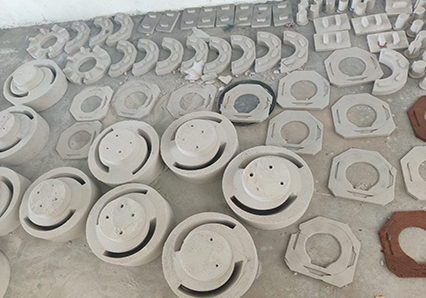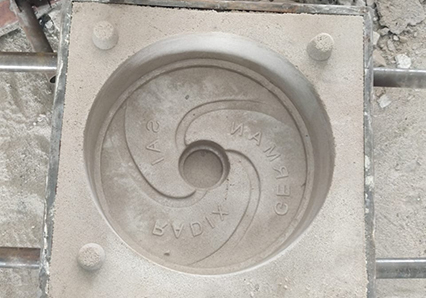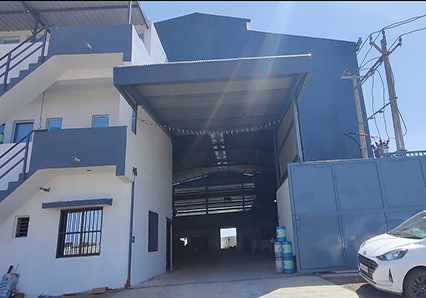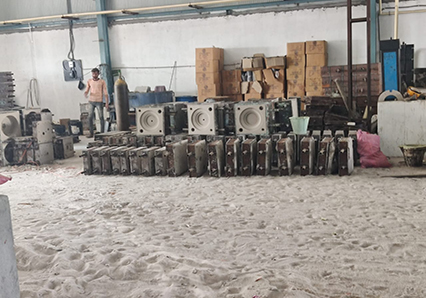Sand Casting Process


1. Mold-making
2. Clamping
3. Metal Pouring




Sand casting, the most widely used casting process, utilizes expendable sand molds to form complex metal parts that can be made of nearly any alloy. Because the sand mold must be destroyed in order to remove the part, called the casting, sand casting typically has a low production rate. The sand casting process involves the use of a furnace, metal, pattern, and sand mold. The metal is melted in the furnace and then ladled and poured into the cavity of the sand mold, which is formed by the pattern. The sand mold separates along a parting line and the solidified casting can be removed. The steps in this process are described in greater detail in the next section.

The first step in the sand casting process is to create the mold for the casting. A sand mold is formed by packing sand into each half of the mold. The sand is packed around the pattern, which is a replica of the external shape of the casting. When the pattern is removed, the cavity that will form the casting remains.The mold-making time includes positioning the pattern, packing the sand, and removing the pattern. Also, lubrication is often applied to the surfaces of the mold cavity in order to facilitate removal of the casting. The lubricant that is used is chosen based upon the sand and molten metal temperature.

Once the mold has been made, it must be prepared for the molten metal to be poured. The surface of the mold cavity is first lubricated to facilitate the removal of the casting. Then, the cores are positioned and the mold halves are closed and securely clamped together.

The molten metal is maintained at a set temperature in a furnace. After the mold has been clamped, the molten metal can be ladled from its holding container in the furnace and poured into the mold. Enough molten metal must be poured to fill the entire cavity and all channels in the mold. The filling time is very short in order to prevent early solidification of any one part of the metal.

After the predetermined solidification time has passed, the sand mold can simply be broken, and the casting removed. Once removed, the casting will likely have some sand and oxide layers adhered to the surface. Shot blasting is sometimes used to remove any remaining sand, especially from internal surfaces, and reduce the surface roughness

During cooling, the material from the channels in the mold solidifies attached to the part. This excess material must be trimmed from the casting either manually via gas cutting or grinding. A larger casting will require a longer finishing time.